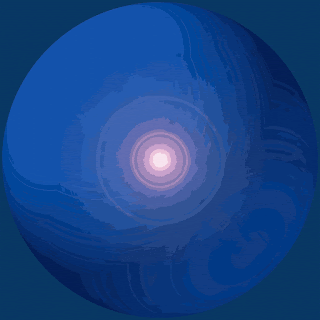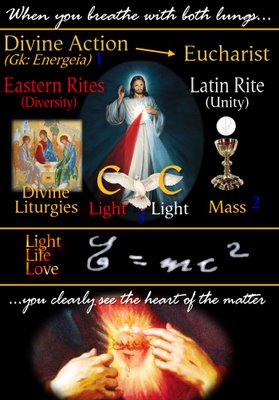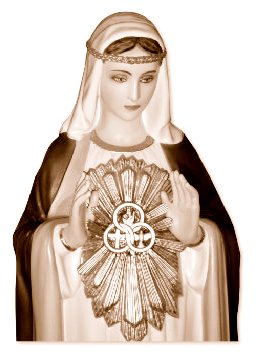J.M.J. + O.B.T. + M.G.R.*
Dante's Paradiso?
Canto 33
SOURCE: Digital Dante
If we divide Paradiso 33, searching for the narrative structure
that it resists, we begin by distinguishing the oratorical prelude of
the canto’s first third, its first 45 verses, from the ensuing story of
the pilgrim’s final ascent. This story can, I believe, be viewed as
three circular waves of discourse (like the rippling motion of water in a
round vase that is compared to waves of spoken speech at the beginning
of Paradiso 14): three circulate melodie, three
“jumps” by which the poet zeroes in on his poem’s climax. He approaches
and backs off, approaches and backs off again, and finally arrives.
Each of these circular movements is made up of three textual building
blocks used by the poet to keep the text jumping, to prevent a
narrative line from forming. The three textual building blocks are:
- brief moments of “plot,” where the pilgrim does something or something happens to him, distinguished by the past tense;
- metapoetic statements about the insufficiencies of the poet to his task;
- apostrophes to the divinity praying for aid.
The first of the circular movements, which I posit from lines 46 to
75, articulates most clearly the three textual components. It begins
with a sequence of pure plot, in which Dante narrates what happened in
the past tense, first stating unequivocally that “l’ardor del desiderio
in me finii” (I lifted my longing to its ardent limit [48]), and then
describing how he looked upward, training his gaze more and more (“più e
più” now takes the place of “più e meno”) along the divine ray (46-54).
...
Within the luminous substance there appeared three circles of three
colors and one dimension, two reflecting each other like rainbows and
the third mediating equally in between:
e l’un da l’altro come iri da iri
parea reflesso, e ’l terzo parea foco
che quinci e quindi igualmente si spiri. (Par. 33.118-20)
one circle seemed reflected by the second,
as rainbow is by rainbow, and the third
seemed fire breathed equally by those two circles.
But the effort to sustain the narrative line is too great, and the
poet breaks in, first to exclaim again about the “shortness” of his
speech (121-23) and then to address the eternal light that alone knows
itself, is known by itself, and, knowing, loves itself (124-26). The
apostrophe’s Trinitarian language moves the poet back into plot, into
confronting the ultimate mystery of the incarnation, of the second
circle that is painted within itself, in its same color, with our human
image, “nostra effige” (131). Like a geometer who concentrates all his
energies on squaring the circle but cannot find the principle he needs
(an intellective rather than affective simile, but devoted to the
intellect’s failure), such is the pilgrim before that final paradox,
“that new vision”: “quella vista nova” (136).
...my mind was struck by light that flashes and, with this light receives what it has asked
Sincerely yours in Jesus through Mary,
Mike Rizzio
Imitate Mary
Become like Jesus
Live for the Triune God
Seek the Light of Our Lord Jesus Christ
See you on the High Ground!
* - J.M.J. + O.B.T. + M.G.R. stands for:
Jesus, Mary and Joseph;
O Beata Trinitas;
St. Michael, St. Gabriel and St. Raphael





























No comments:
Post a Comment